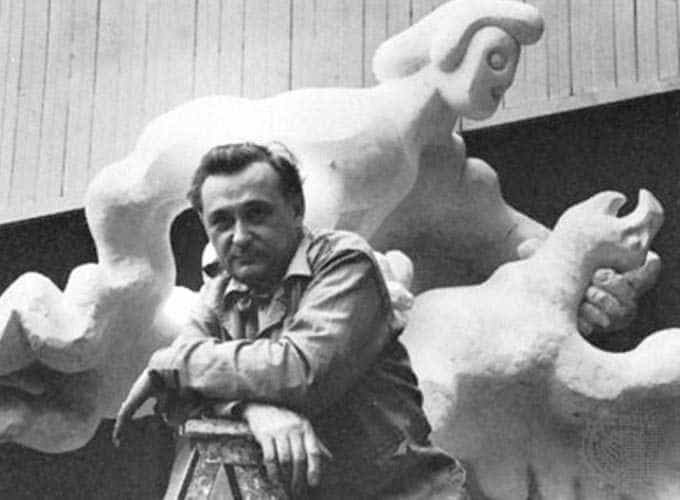Jacques Lipchitz
Jacques Lipchitz (1891-1973) moved to Paris from Lithuania in 1909 with no academic training. First a student of the Ecole des Beaux-Arts, Lipchitz soon transferred to the Académie Julian. In Paris Lipchitz would attend school in the mornings, and immerse himself in the myriad of cultural histories that Paris had to offer and explored the museum collections all afternoon. Lipchitz was of the same generation as Gonzales, Picasso, Brancusi, and Archipenko; slowly he turned away from Rodin and Bourdelle to embrace the cubist style, and began to fuse primitive influences into his work. By the mid 1920s Lipchitz’s sculptures began to take on a monumental stature as he explored the sculptural possibilities of Picasso and cubism. The angles in his work grew in scale and decreased in amount, but always returned to the human form.
With the German invasion, Lipchitz immigrated to New York in 1941. At this point his work became highly autobiographical. In New York Lipchitz worked briefly with Stanley Hayter at Atelier 17. Studying engraving with Hayter, Lipchitz was able to concentrate on his drawings, a medium he had always incorporated into his work. In fact, Lipchitz’s works on paper accompanied many of his sculptural exhibitions, and were occasionally shown independently. Lipchitz was an artist who believed that one grew more using an alternate medium one was less comfortable with, than if one concentrated in just one primary area. Lipchitz moved away from printmaking for almost twenty years as he worried that the prints were compromising his sculpture.
The Grosmans and Lipchitz had been close friends in Paris, and remained in touch throughout their time in America. When the Grosmans started their reproduction business, Lipchitz made a drawing specifically for them to reproduce. Lipchitz exhibited often during the end of his life, and was buried in Israel in 1973.
